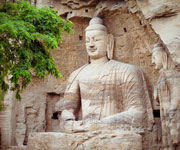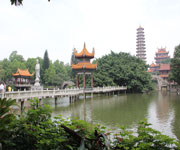South African Government Introduces Online Portal for Heritage Sites for the first time ever, South Africans are now able to air their views online regarding the protection of their cultural heritage.
South African Heritage Resources Agency

This after government through the South African Heritage Resources Agency (SAHRA) introduced a heritage resource management web based database portal, the South African Heritage Resource Information System (SAHRIS) (www.sahra.org.za/sahris). SAHRA public relations officer, Berri Samuels said the portal is an exciting, first of its kind initiative in the country.
"It takes SA heritage and puts everything into one place; it is accessible by all South Africans, through visiting the website and registering.
"This is an administrative tool that can be used by Heritage Resource Management and other bodies," she said.
Want to read UNESCO Daily News Updates? Click
Here!!!Samuels said the website is created in a way that will show all online users how to explore the site, guide them on how to create and submit their applications.
"All records created from now on, may be recorded, tracked and followed up by users," she said, adding that the application include permits for archaeology, sites, heritage objects, graves and wrecks.
According to Samuels, decisions about permit applications are recorded and may now be tracked online.
"This is great progress for accessibility, transparency, prevention of loss and delays. Public may even use the web portal as a means to submit a nomination site for declaration," she said.
Project manager Nick Wiltshire said with the introduction of the web portal, all permit applications are now being submitted and recorded online.
"It's fully digitalised, it's paperless and it uses a very sophisticated GIS platform and the first website in the world where people can see a map with all the developments taking place across the country.
"If people, think that a particular proposed development in their area will result in the demolition of their heritage site, they can visit the web portal and express their objections or even leave message of support," he said.
Wiltshire said currently they have 720 users and he further urged Tourism bodies and property owners to register on the site for free.
The development of the plan began in January this year using the Drupal Content Management System platform in line with SAHRA's overall adoption of free open source software.
However, the system has been tested and used by SAHRA's employees since May this year and it is now being rolled out to all the country's nine provinces.
The system enables the efficient and coordinated management of our heritage and the maximum benefit to heritage resources by appropriate promotion and use of these resources.
SAHRA acting chief executive officer, Mmabatho Ramagoshi said: "it is a critical for South Africans to have this portal because this is where is going to ensure that all our data is streamline and every South African from whatever corner they will be able to access more information about their heritage."
The agency has already trained four heritage authorities in Kwazulu-Natal, Eastern Cape, Northern Cape and Free State. In January, more training will the done in the remaining provinces.
SAHRA which is an agency of the Department of Arts and Culture is an administrative body responsible for the protection of South Africa's cultural heritage. - SAnews.gov.za

 Apologies, once again, for the poor quality scans of film photos. All you have to do is close your eyes and imagine crisp white sand beaches, turquoise oceans and tranquility and you're there, anyway.
Apologies, once again, for the poor quality scans of film photos. All you have to do is close your eyes and imagine crisp white sand beaches, turquoise oceans and tranquility and you're there, anyway.







 Speaking to reporters, Bokova said Cuba is an important example for other countries in education with this method that is implemented in different regions of the planet as part of education campaigns. She added that recently had the opportunity to visit a literacy center in a community in Timor Leste that successfully applies Yes, I can, "which we are trying to enter in several African nations."
Speaking to reporters, Bokova said Cuba is an important example for other countries in education with this method that is implemented in different regions of the planet as part of education campaigns. She added that recently had the opportunity to visit a literacy center in a community in Timor Leste that successfully applies Yes, I can, "which we are trying to enter in several African nations."


























+cropped.jpg)
.jpg)
.jpg)
.jpg)
.jpg)
.jpg)
.jpg)
.jpg)












